Jamaica
Eastern Standard Time (EST), UTC−5 year-round
No daylight saving time observed
Sunrise ~05:45–06:15, sunset ~17:30–18:00
Jamaican Dollar (JMD), symbol “J$”
1 USD ≈ J$155 (rates vary)
ATMs and cards accepted in cities; carry cash in rural areas
Service charge ~10%; tipping 10–15% customary
August 6 – Independence Day (1962)
August 1 – Emancipation Day
Festivities: parades, military honours, festivals
Visa-Free Countries
Visa on Arrival Countries
E-Visa Countries
Visa Required Countries
Culture
Jamaica’s culture is a vibrant fusion of African, European, Indian and Chinese influences, articulated through its globally influential music, distinctive language and bold culinary traditions. Reggae, ska and dancehall rhythms pulse from Kingston’s dancehalls to rural street corners, while the Rastafari movement’s spiritual ethos informs art, fashion and community life. Jamaican Patois, a Creole dialect, shapes everyday expression and literature. Folkloric celebrations such as Jonkonnu blend masquerade, drumming and storytelling rooted in West African heritage. Maroon communities preserve ancestors’ craftwork—basket weaving and drum making—alongside ancient land rights customs.
- Music & Dance: Birthplace of reggae icons like Bob Marley; yearly Reggae Sumfest and Rebel Salute festivals showcase roots, dub and dancehall scenes.
- Cuisine: Jerk (spice-rubbed meats), ackee & saltfish (national dish), curried goat, patties and festival (fried dough) highlight bold flavors; roadside “jerk pits” essential stops.
- Language & Literature: Jamaican Patois coexists with English; acclaimed authors like Marlon James and Olive Senior explore identity and diaspora.
- Artisan Crafts: Painted fishing boats at Port Antonio, Alligator Head ceramics, bamboo crafts and straw hats sold at markets and craft villages.
- Religion & Festivals: Blend of Protestant denominations, Catholicism and Rastafari; Emancipation Day concerts and Christmas “Nine Nights” vigils punctuate the calendar.
- Sports & Identity: Track legends in athletics, cricket rivalries with regional neighbours, and football (soccer) culture unite communities nationwide.
Tourism & Best Sites to Visit
From mist-shrouded Blue Mountains to powder-white beaches and limestone caves, Jamaica offers an array of natural and cultural attractions. Adventure-seekers trek hidden waterfalls; history buffs explore colonial estates; beach-lovers unwind in resort towns framed by swaying palms.
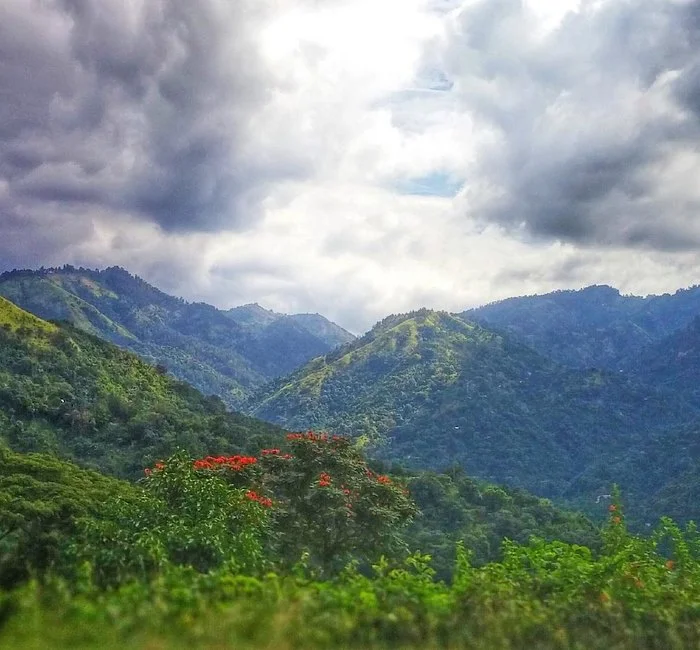
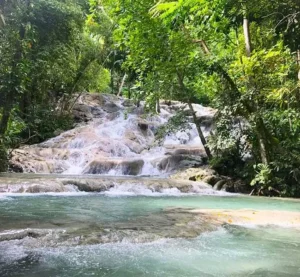
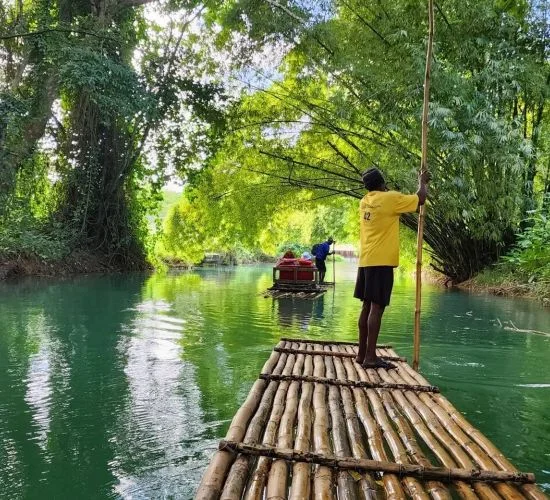
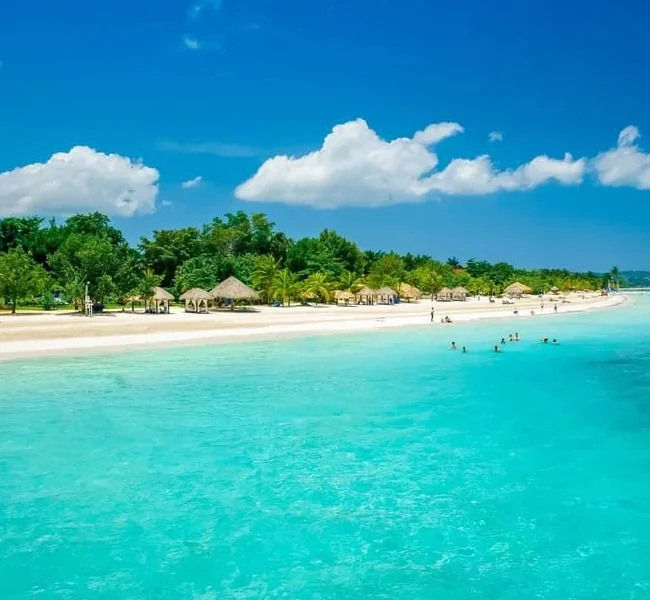
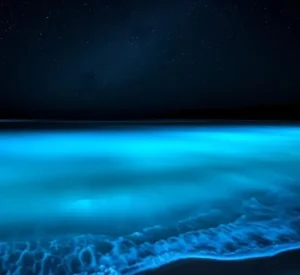
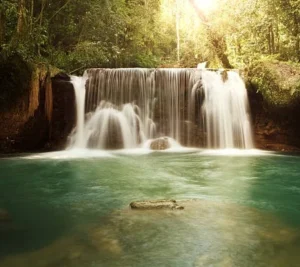
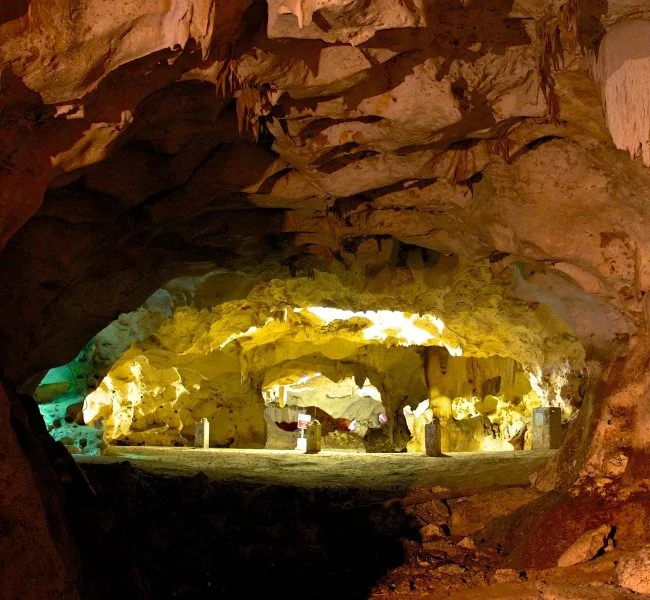
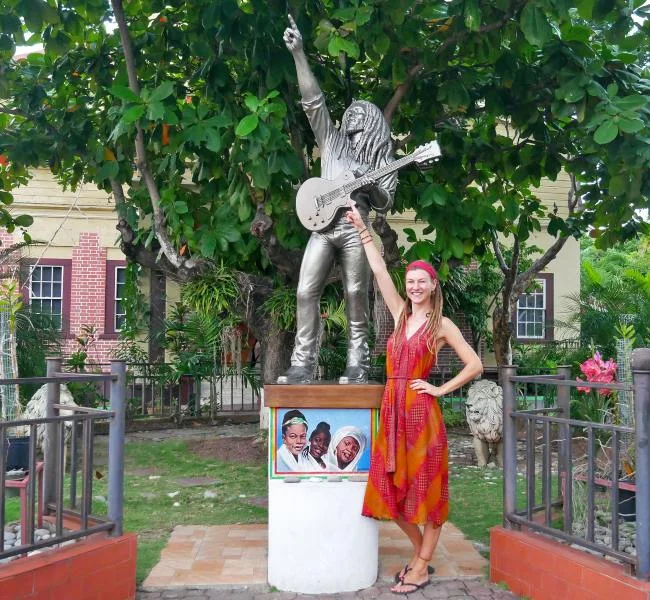
-
Blue Mountains
Rising to over 2,250 m, the Blue Mountains form Jamaica’s highest range, blanketed by mist and home to one of the world’s top‐rated coffees. Hikers traverse a network of trails through ancient mahogany and fern‐clad forests, pausing at lookout points to gaze over rolling valleys and the sparkling Caribbean Sea. Coffee aficionados visit award‐winning plantations like Blue Mountain Coffee Estate to tour roasting facilities and taste bean varieties at dawn. Birdwatchers may spot the endemic Jamaican blackbird and streamertail hummingbird flitting among wild orchids. Whether you seek sunrise atop Blue Mountain Peak or a leisurely nature walk, this UNESCO Biosphere Reserve promises a blend of biodiversity, culture, and panoramic beauty. -
Dunn’s River Falls
Tumbling 180 m in a series of terraced cascades, Dunn’s River Falls is one of Jamaica’s most iconic natural attractions. Visitors form human chains to climb the slippery limestone steps, guided by expert local climbers who share tales of nearby pirate hideouts. At the base, warm pools invite swimmers to relax beneath tropical palms, while souvenir stalls offer handcrafted wood carvings and vibrant sarongs. The park’s botanical gardens showcase indigenous plants like guinep and ackee trees. Film buffs recognize these falls from scenes in movies such as “Dr. No.” A short hike leads to a scenic overlook, where the river meets the sea in a dramatic splash. -
Martha Brae River
Popularized by its gentle bamboo rafting tours, the Martha Brae River winds through lush gorges and mangrove‐lined banks in Trelawny Parish. Expert raft captains navigate six‐meter rafts with deft bamboo poles, pointing out native plant species—water lilies, royal palms, and flowering guava—and weaving in folk stories passed down through generations. Along the banks, small shrines honor river spirits, reflecting Jamaica’s deep spiritual ties to water. Mid‐river stops invite guests to sample freshly pressed coconut water and locally harvested sugar cane. At dusk, the river’s glassy surface mirrors fiery sunsets, making every journey both tranquil and visually stunning. -
Seven Mile Beach
Stretching nearly 11 km along Negril’s western shore, Seven Mile Beach dazzles with soft white sand and crystalline turquoise waters. Daytime brings swimming, snorkeling over vibrant coral gardens, and jet skiing against a backdrop of swaying coconut palms. Beachfront resorts line the sand, offering cabana rentals and seaside dining with jerk chicken and chilled rum punch. As the sun dips, reggae rhythms drift across the shoreline, segueing into beachfront bonfires and cliff‐diving shows from Rick’s Cafe atop dramatic limestone bluffs. Whether you seek solitude in a hammock or lively water sports, Seven Mile Beach embodies Jamaica’s laid‐back island spirit and natural splendor. -
Luminous Lagoon
Near Falmouth, the Luminous Lagoon glows nightly as microscopic dinoflagellates light up under disturbance, creating a surreal bioluminescent display. Boat captains guide visitors through calm waters at dusk, when the glow is most intense, then pause for swimmers to dip hands and leave trails of sparkling light. Interpretive talks explain how mangrove runoff and sheltering reef conditions sustain these organisms. Conservation efforts ensure water quality remains pristine. Above the surface, seabirds wheel in the golden twilight; below, occasional fish flicker like stars. This natural phenomenon ranks among the world’s brightest lagoons, offering a magical and educational night excursion. -
YS Falls
A series of seven cascades surrounded by mango, ackee, and bamboo groves, YS Falls offers a quieter alternative to busier tourist sites. Visitors traverse hanging bridges and wooden platforms, pausing to swim in emerald plunge pools at the base of each fall. Zip‐lining adventures launch from high above the 45 m main cascade, dropping you into misty air. On-site amenities include picnic gazebos, a butterfly garden, and locally run cafes serving breadfruit chips and freshly squeezed sorrel juice. Guided nature walks highlight indigenous flora and fauna, while rustic guest cottages allow overnight stays under the chorus of crickets and frogs. -
Green Grotto Caves
Carved into a limestone ridge near Ocho Rios, the Green Grotto Caves span over two kilometers of subterranean passages, lakes, and chambers. Guided tours navigate wooden walkways beneath stalactite and stalagmite formations, pausing to view emerald‐green underground lakes reflecting diffused light. Historically used by the Taíno as a refuge and by colonial settlers for storing contraband, the caves resonate with archaeological intrigue. Bats flutter overhead, and the guide’s narration blends geology with folklore about spirits that once guarded these caverns. Above ground, a small museum displays artifacts recovered from early excavations, enriching the exploration with cultural context. -
Bob Marley Museum
Housed in the former home of reggae legend Bob Marley, the museum in Kingston’s uptown offers an intimate look at his life and legacy. Restored rooms display Marley’s personal recording studio, awards, and stage costumes, while interactive exhibits chronicle his rise from Trench Town to global stardom. A guided tour details his songwriting process and the social messages behind tracks like “Redemption Song.” The adjacent café serves Ital vegan dishes reflecting Rastafari dietary principles. Outside, the lush garden features a meditation bench overlooking the city, where fans leave flowers and handwritten notes. Annual concerts on Marley’s birthday draw devotees from around the world.
Transportation
Jamaica’s transportation network spans modern highways linking Kingston, Montego Bay and Ocho Rios, supplemented by rural secondary roads and mountain tracks. Traffic in urban areas can be heavy; allow extra time for peak hours. Public transport includes government-run buses, privately operated “route taxis,” ferries between coastal towns, and limited domestic flights. Road conditions vary—4×4 vehicles recommended in hilly western parishes and Blue Mountains.
- JUTC & Jamaica Omnibus Service: Green and cream buses in Kingston and Spanish Town; routes extend into St. Catherine and Clarendon.
- Route Taxis: Minibuses and sedans on fixed routes throughout parishes; fares paid onboard in cash; often quicker than buses.
- Private Taxis & Shuttles: Metered taxis in main cities; hotel shuttles and shared-ride vans link resorts to airports and cruise ports.
- Domestic Flights: Caribbean Airlines and Fly Jamaica connect Norman Manley (KIN) and Sangster (MBJ) with Negril’s Ian Fleming Intl (OCJ) and Ken Jones (POT) in Port Antonio.
- Ferries & Water Taxis: Regular service between Port Antonio and coastal resorts; charter boats for beach-hopping and river rafting excursions.
- Car Rentals: Available at all major airports; automatic and 4×4 options; GPS and local SIM recommended for navigation.
Airports
Four international and three regional airports connect Jamaica to North America, Europe and the Caribbean. Facilities range from full-service terminals to small charter airstrips in scenic coastal towns.
- Sangster Intl. (MBJ): Montego Bay’s gateway—25 km from city centre; served by major US, Canadian and European carriers; duty-free, lounges, car rentals.
- Norman Manley Intl. (KIN): Kingston’s airport—8 km from downtown; US customs pre-clearance, business centre and taxi services.
- Ian Fleming Intl. (OCJ): Ocho Rios/Port Antonio; regional flights, private charters; boutique check-in and ground transfers to luxury resorts.
- Ken Jones Aerodrome (POT): Port Antonio; small-craft and charter operations; scenic approach over coastline.
- Tinson Pen (KTP): Kingston area; scheduled charters and general aviation, close to downtown hotel strip.
- Negril Aerodrome (NEG): Resort area; limited commuter flights; taxi and shuttle access to Seven Mile Beach.
Visa & Travel
| Nationality/Region | Entry Status | Max Stay | Key Requirements |
|---|---|---|---|
| USA, Canada, UK, EU, CARICOM | Visa Free | Up to 6 months | Passport valid ≥6 months, return/onward ticket |
| China, India, Russia, Vietnam | Visa Required | Varies by bilateral agreement | Apply at Jamaican embassy; proof of funds; itinerary |
| Transit (all nationalities) | Transit Allowed | ≤24 hours | Confirmed onward ticket |
Health: Yellow fever vaccination if arriving from endemic areas; recommended: hepatitis A, typhoid, dengue precautions.
Customs: 200 cigarettes; 1 L spirits; US$500 of goods duty-free per adult.
Safety Tips: Exercise caution in Kingston’s downtown and Spanish Town after dark; use hotel safes for valuables.
Money Matters: Banks open Mon–Fri 09:00–15:00; ATMs dispense JMD and USD; credit cards accepted at hotels and larger merchants.
Etiquette: Greet with “Good morning” or “Wah gwaan?”; respect Rastafari and Maroon communities’ protocols; ask permission before photographing people.
- Asia
- Singapore
- Japan
- South Korea
- Africa
- Seychelles
- Mauritius
- South Africa
- Contact:
- Address: Eighth Avenue Place, East Tower, 525 8 Avenue SW Suite 3200 Calgary, Alberta T2P 1G.
- Email: Info@theazmip.com
- Number: +12812363495
Travel the World Without the Burden of Visa Applications, as TheAzmip.com Connects You to the Best Visa-Free Destinations.
- North America
- United States
- Canada
- Mexico
- Oceania
- Australia
- New Zealand
- Samoa

